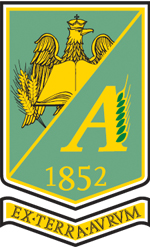Published in Scientific Papers. Series A. Agronomy, Vol. LX
Written by Cemal KURT, Halis ARIOGLU
Sesame (Sesamum indicum L., Pedaliaceae) is one of the oldest and important oil seed crops known by mankind. Sesame was grown during the ancient Harappan, Mesopotamian, and Anatolian areas for its edible seed and its oil but now it is grown in more than 60 countries. Landraces of sesame represent a valuable genetic resources for breeding and genetics studies. The aim of this study was to determine agronomical and quality traits of some sesame genotypes (17 landraces and 7 commercial cultivars). The field experiment was arranged in randomized complete block design with three replications at the research farm of Department of Field Crops, Faculty of Agriculture University of Cukurova in 2010 and 2011. The results of the study showed that the differences between the landraces and cultivars were statistically significant for lowest branch height, lowest capsules height, number of capsules, number of branch, 1000 seeds weight, seed yield, oil content and protein content. According to a two-year average, the highest seed yield was obtained from Adana-Saricam population (1952 kg/ha), while the lowest seed yield was obtained from MuglaOrtaca population (615 kg/ha). The highest oil content was obtained from Kahramanmaras population (53.28%), while the lowest value was obtained from Adana-Yumurtalik3 population (49.3%).
[Read full article] [Citation]




